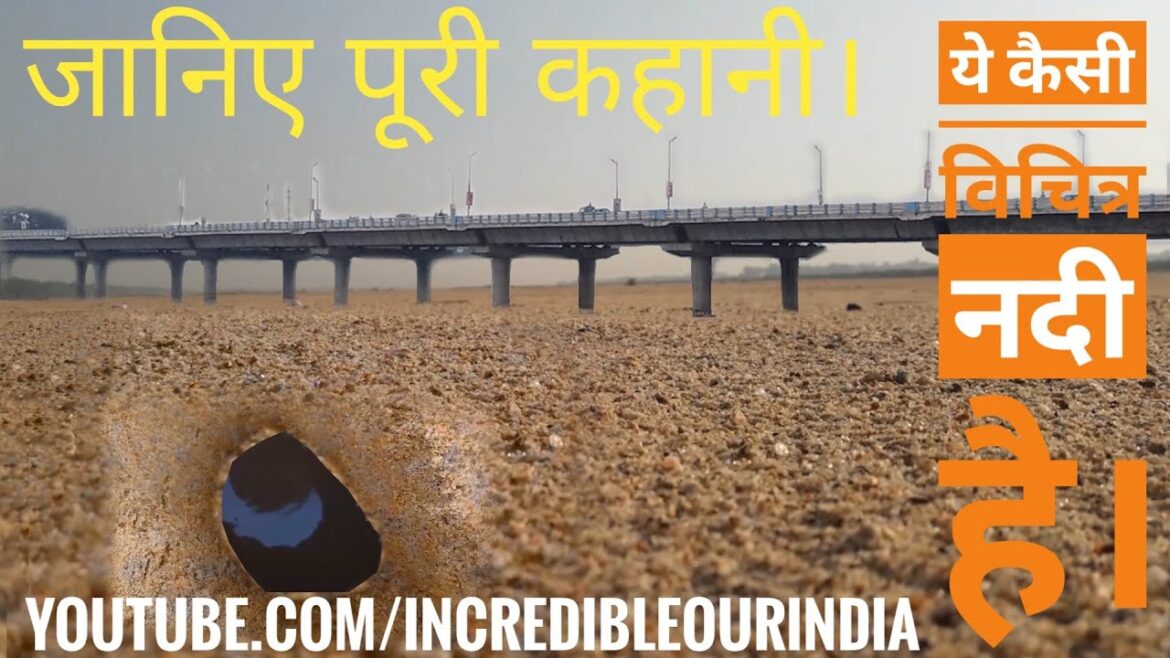Falgu Nadi | Gaya | Bihar | History of Falgu River | फल्गु नदी | Incredible Our India
————————————-
Other Videos :
Pitru Paksha : https://youtu.be/GGYWhz9H9po
GAYA : https://youtu.be/xzDZzoDa-NE
Gaya Railways Station : https://youtu.be/6pDUAtFz54c
————————————-
The Phalgu or Falgu, a river that flows past Gaya, India in the Indian state of Bihar, is a sacred river for Hindus and Buddhists. Lord Vishnu’s Temple Vishnupad Mandir is situated on the bank of Phalgu river.
#Falgu_Nadi #Falgu_River #फल्गु_नदी #Gaya #Bihar #Incredible_India
Course :
The Phalgu is formed by the confluence, some 3 kilometres (2 mi) below Bodh Gaya, of the Lilajan (also called Niranjan or Nilanjan) and the Mohana, two large hill streams each of which is over 270 metres (300 yd) wide. The Phalgu is also mentioned as Niranjan. The united stream flows on to the north past the town of Gaya, where it attains a breadth of over 820 metres (900 yd). The Phalgu here passes by a high rocky bank, on the steep sides of which are many paved stairs leading down to the river bed, while high above are the Vishnupad Mandir, with many minor shrines around it. It then runs in a north-easterly direction for about 27 kilometres (17 mi), and opposite the Barabar hills it again takes the name of Mohana, and divides into two branches which eventually flow into a branch of the Punpun.
History :
Women performing Chhath Puja in the river Phalgu in Gaya
The portion of the course of the Phalgu flowing by Gaya is sacred to the Hindus. It is the first holy site visited by the pilgrim and here his first offering must be made for the souls of his ancestors. According to the Gaya Mahatmya, which forms part of the Vayu Purana, the Phalgu is the embodiment of Vishnu himself. One tradition states that it formerly flowed with milk.
According to Hindu belief, the soul wanders after death until pindadan, or religious service seeking salvation for the dead from the cycle of rebirth, is performed. The fortnight-long pitrapaksh period is considered auspicious to offer pindadan. The 15 days of the waning moon during the Hindu month of Ashvin are known as pitrapaksh. Pindadan is traditionally offered on the banks of the Phalgu at Gaya. It is mandatory for Hindu devotees offering pindadan to shave their heads and take a holy dip and head for the Baitarni pond. The prayers are performed at the Vishnupad Mandir. Priests, known as Gaywal-pandas, conduct the ritual. Thousands of Hindus visit Gaya for the purpose of pindadan.
Hinduism :
There is reference to the city of Gaya and the Phalgu in the Ramayana in which it says that Sita had cursed the Phalgu River. There is an interesting story and the purana states that on account of this curse, the Phalgu lost its water, and the river is simply a vast stretch of sand dunes. According to history, in the absence of Rama, his wife Sita offered pinda on its banks to Dasharatha father of Rama.
The story goes that Rama, along with his brothers and Sita, came to Gaya to perform the sacred rites for his father, Dasaratha. When the brothers were bathing in the river, Sita was sitting on the banks, playing with the sand. Suddenly, Dasaratha appeared out of the sand, and asked for the Pindam, saying he was hungry. Sita asked him to wait till his sons returned, so that she could give him the traditional Pindam of rice and til. He refused to wait, asking her to give him pindams made of the sand in her hand.
Having no other option, she gave him the Pindam he desired with five witnesses – the Akshaya Vatam, the Falguni River, a cow, a Tulsi plant and a Brahmin. Soon, Rama returned and started the rituals. In those days apparently, the ancestors would arrive in person to collect their share, and when Dasaratha did not appear, they wondered why. Sita then told them what had happened, but Rama could not believe that his father would accept pindams made of sand. Sita now mentioned her witnesses, and asked them to tell Rama the truth.
Buddhism :
Before attaining Enlightenment, the prince Siddhārtha Gautama practiced asceticism for six years (ten or twelve years according to some accounts) on the banks of the river, residing in a forest near the village of Uruvilvā. After realizing that strict asceticism would not lead to Enlightenment, he recuperated after bathing in the river and receiving a bowl of milk-rice from the milkmaid Sujātā.
He sat under the nearby pippala tree, where he finally achieved Enlightenment. This tree became known as the Bodhi Tree, and the site became known as Bodh Gayā.
Follow Me On :
Instagram : https://bit.ly/3ffJk34
Twitter : https://twitter.com/ThaUttamSingh
———————————–
MY OTHER CHANNELS :
India’s Uttam Singh : https://bit.ly/2ZZtRhg
Shuddh देसी : https://bit.ly/2KlV4H5


24 Comments
vishunpath nahi bhai vishnupad mandir ha
baki achchha laga
Ek Chamatkar hai
Bahut sundar
Vary nice 🙏🙏
Nice video ☺️
Wow such a amazing story
Great video
Good good 👍
Good
Narayan Narayan Narayan 🙏🕉️🚩
Kahin se bhi vyavastha karo aap ki Modi jald se jald Mar Jaaye yah Dua Dena aap sab log Jay Bheem Jay Bharat aapki video bahut bahut acchi lagi hai बहुत-बहुत dhanyvad बहुत-बहुत dhanyvad bahut bahut dhanyvad
Thanks video banane k liye
Nice keep it up
Very good informative video ❤ Love from NEPAL 🇳🇵
Falgu Nadi ka aapane darshan karaya aapka Bada shukriya Ham bhi dekh kar dhan dhan ho Gaye thank u Veri Mach
Good
Iss nadi ko shrap mila hai maa sita ji se 🙄👍
Maine bhi vlog dekh ke aya .. ki maa Sita ne shrap diya he ki ye hamesha sukhi rahegi
Amezing
Bahut achha jaybhim
Jai.sri.ram.
भईया सीताजी ने किसी को भी श्राप नही दिया रामायण मे साफ लिखा है कि भगवान् राम ने अपने पिताजी का पिंडदान किया था
অপরিচিতা, রবীন্দ্রনাথ ঠাকুর, HSC 🇧🇩
Kya may June me v paani nikal sakta hai